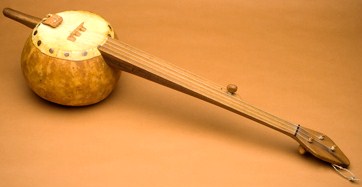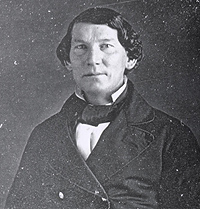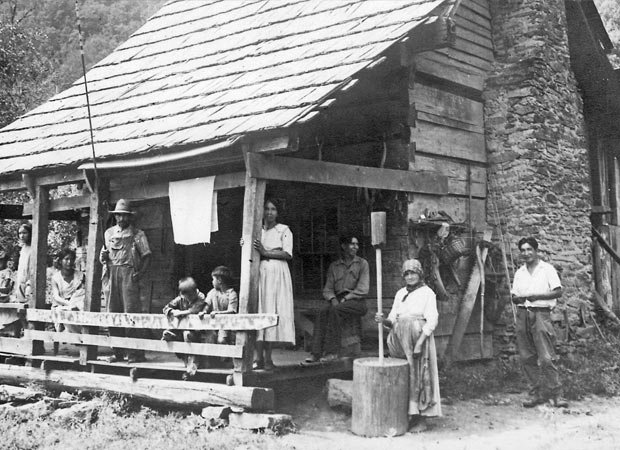If you asked a historian to name an original American folk instrument, it is almost certain the historian would say the banjo. However, there is anothher instrument that is just as deserving of that title - it is the Appalachian Mountain Dulcimer.
The Appalachian Dulcimer – America’s Original Folk Instrument
As an avid reader of history, and that includes music history, I frequently encounter the statement that the banjo is the only musical instrument to originate in America. But there is another instrument as deserving of this title and certainly as authentically American – the Appalachian Mountain Dulcimer. The reason for this disparity is most likely the historic popularity of the banjo as compared to the relative unknown status of the mountain dulcimer.
The Gourd Banjo

Nearly all inventions are based at least partially on earlier discoveries and it is rare that something truly unique and original springs to life without borrowing from its predecessors. There are several Asian, Middle Eastern and African instruments that are reminiscent of the banjo. These use a tightly stretched animal skin over a drum or gourd to amplify the sound of the strings. But the modern banjo’s ancestor was likely brought to the United States through African slaves. These African gourd instruments were eventually updated with additional strings and played in the strumming/plucking style known as “frailing” or “clawhammer.” While the slaves retained memories of traditional African music, they were also exposed to European music. These two forms would be combined to form the basis for country, blues, jazz and eventually rock and roll. The new improved instrument was much better suited for playing this new “American” music.
Joel Sweeney - Minstrel

The banjo first became well known outside plantation culture around the 1830’s when it left the slave cabins to become a musical and comic prop in blackface minstrel shows. One of the most popular minstrels was Joel Sweeney, who is often credited with popularizing the banjo and for adding the shortened 5th string. Although he deserves a great deal of credit for popularizing the banjo, African slaves had added the 5th string to their gourd banjos as early as 1777. Nonetheless, through the influence of the minstrel shows, playing the banjo soon became a common pastime even among white Americans. These fretless banjos were musically limited and it was not until the late 1870’s when people like Henry Dobson began to add frets and a resonator to make the instrument louder and more tonally precise that the banjo became a serious instrument. These refinements opened up new opportunities for the banjo and it began to lose its comic and plantation “stigma”.
With the coming of the Jazz Age and the popularity of Dixieland Jazz, the banjo became even more entrenched as the symbol of American folk music culture. Nearly every Dixieland
band included a banjo, which was the only string instrument that could compete with the volume levels of the trumpet, coronet, trombone and drums.
Even though guitars were included, it was not until Charlie Christian and his
use of the electric guitar that even those revered instruments were considered
as worthy of note.
Simultaneously the growing popularity of early country music gave the banjo another home. Banjo players like Charlie Poole and Uncle Dave Macon were well known not only in the
South but throughout the country. But once Earl Scruggs joined Bill Monroe’s Bluegrass Boys his virtuoso three finger playing style sent the popularity of the banjo into the
stratosphere. In fact, many argue that without the banjo there would be no such thing as bluegrass. So with such a rich history and musical legacy it is easy to understand why
some believe the banjo is America’s only original folk instrument. But they are overlooking another instrument that grew from simple and homemade origins to become a instrument
worthy of serious musical scholarship.
The German Schietholt

Like the banjo, the Appalachian Mountain Dulcimer developed from instruments of the “old country.” The closest relative of the dulcimer is the German sheitholt. These instruments
were common in areas heavily settled by Dutch or German immigrants such as Pennsylvania. As people spread west the sheitholt came along for the ride and was exposed to other
immigrants from England, Scotland and Ireland. The sheitholt comes in various shapes, but its common characteristic is that it has frets placed directly on the soundboard and
these frets are in the form of a diatonic scale. Sheitholts were relatively easy to construct and over time changes were made to the extent that a new instrument came into being.
Though no single person can be credited with the “invention” of the dulcimer, it is commonly believed that the dulcimer took its current form(s) beginning around the 1840’s when
enterprising mountaineers modified the sheitholt to make it louder and more playable. In the various regions of the Appalachians, different versions of the instrument developed.
This is testimony to the isolation of the area, which certainly played some part in keeping the dulcimer from widespread use and acceptance. But also, the instrument had the
inherent limitations of its diatonic scale and a lack of volume that made it unacceptable for use in the same settings where the banjo excelled. No matter how hard one plays
a dulcimer, it is never loud enough to compete with trumpets, trombones or banjos. So the dulcimer was never common or widespread even in the Appalachians.
While the banjo grew up and out of the slave cabins of the south and eventually made its way uptown to big city jazz clubs, the dulcimer stayed in the hills and hollers of
Appalachia. There were no minstrels imitating “hillbillies” by playing a dulcimer. There were no gangsters or flappers sipping bathtub gin and dancing to the sounds of the
dulcimer. There were no country music stars to champion the instrument or broadcast its ancient voice on the radio. Consequently, the dulcimer was almost lost to history.

During the period after the advent of radio up to the late 1950’s, the old fashioned dulcimer was in serious jeopardy of becoming extinct. It did not fit into jazz, country,
classical, rockabilly or any other popular musical style. Although a few people continued to build handmade dulcimers, the instrument never gained the popularity of other
string instruments and consequently was never mass produced. One benefit of this lack of popular appeal is that the instrument kept its traditional origins and never
“got above its raisin’ ”. Fortunately, during the 1950’s folk boom a new generation of enthusiasts discovered the instrument and ironically, the very reasons that the
dulcimer nearly disappeared – being a traditional, old fashioned, mountain instrument of ancient tones - was the very thing that appealed to this new generation.
Since its rediscovery, the Appalachian Mountain Dulcimer continues to gain acceptance and credibility not only with historians but increasingly in musical circles.
In fact, the Appalachian Dulcimer is experiencing a virtual renaissance. While it is still excluded from “radio ready” music, dulcimer festivals, dulcimer clubs and
dulcimer websites are now too numerous to mention and this humble instrument has gained a worldwide following. In 2001 the Kentucky state legislature even designated
the dulcimer as Kentucky’s official musical instrument. So with this growing degree of popularity and official recognition
it is time to accord the dulcimer the status of a truly American folk instrument?